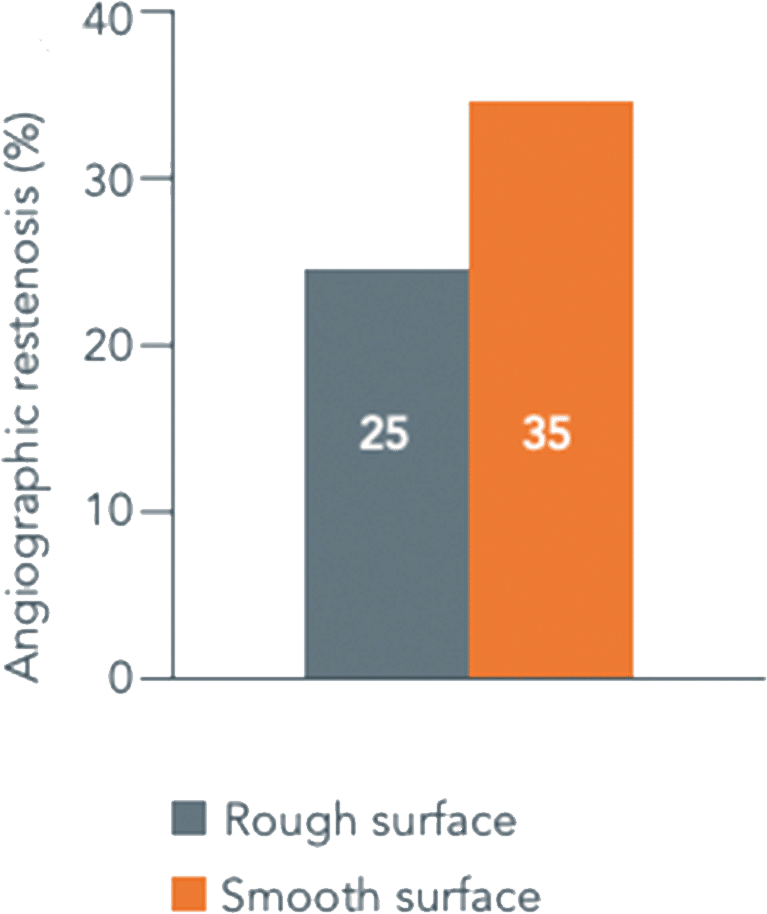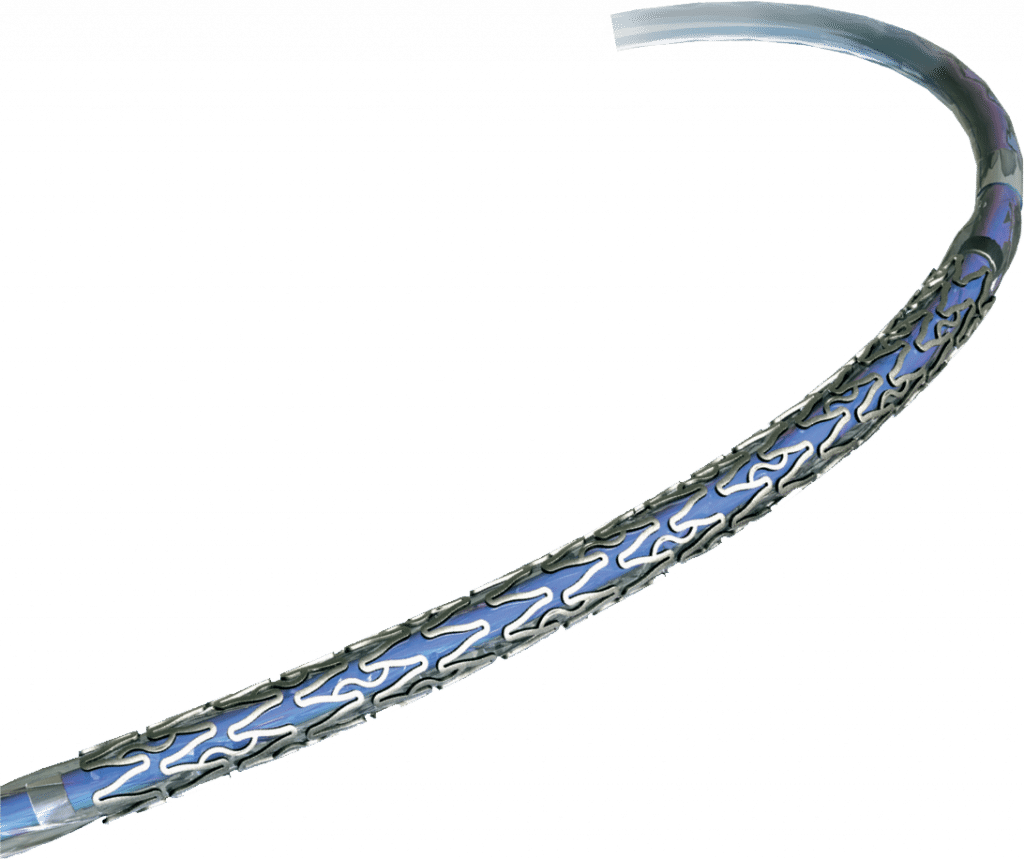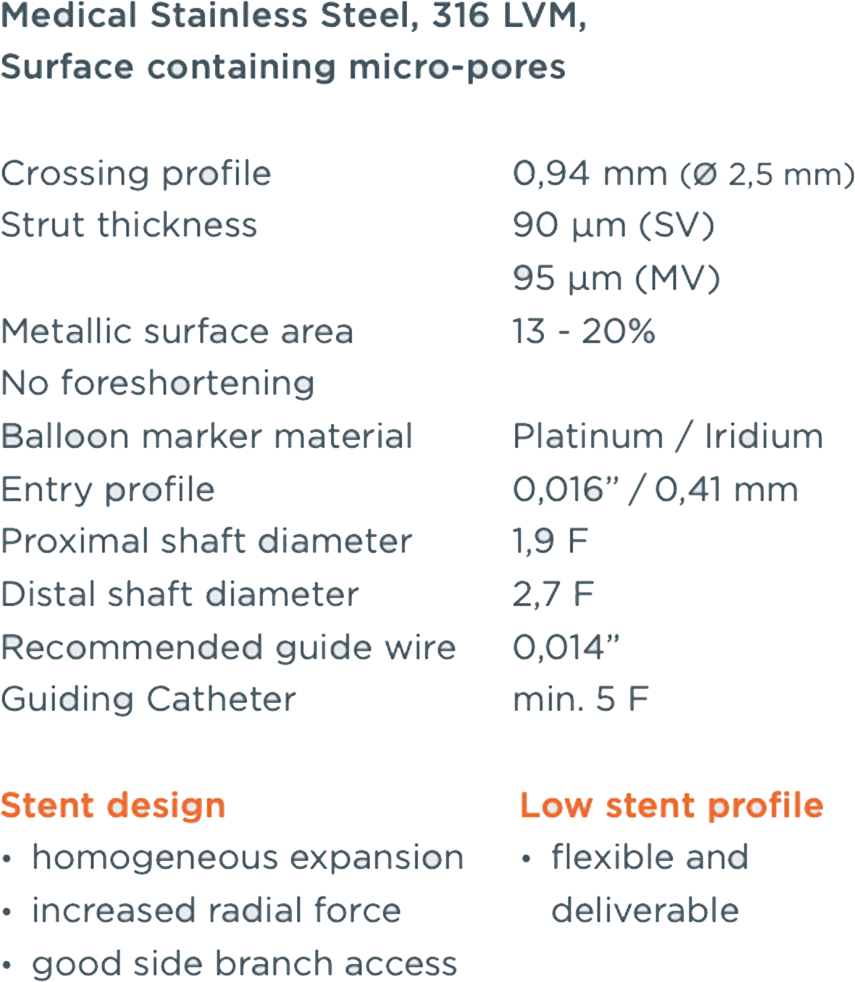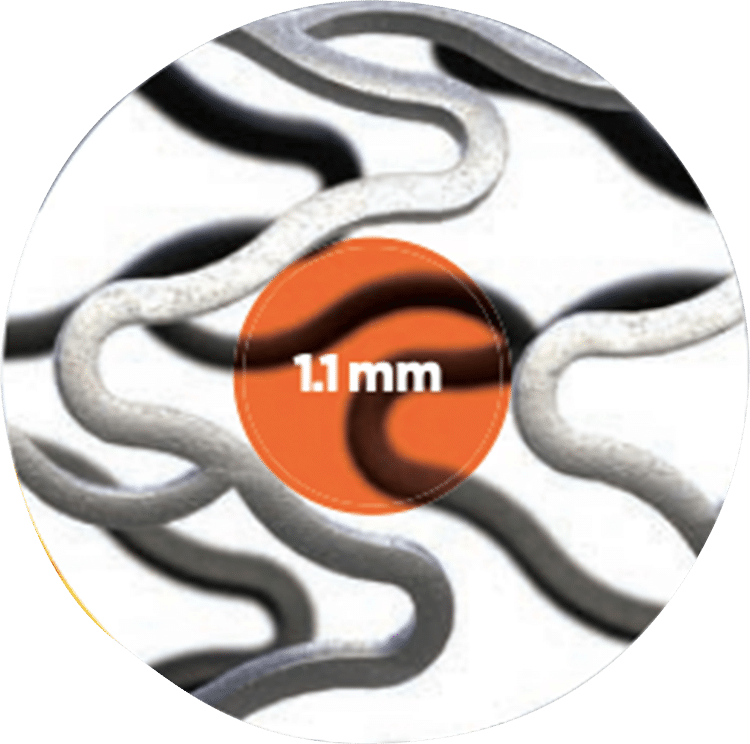Micro-porous surface that matters
The Translumina Yukon® Choice 4 represents the next-generation stent system technology with a surface of unique micro-pores. This stent has been developed in order to improve the healing of the vessel wall. The latest clinical results and scientific reports confirm the biocompatibility of the surface.
Clinical outcome
Better prevention of restenosis due to rough surface. Safety data for 12 months follow-up indicate that the MACE rate of a stent with a rough surface is comparable with that of a bare metal stent, however the rough surface stent shows less angiographic restenosis and late lumen loss at 6 months follow-u

Resources
Product Brochure

Unique stent surface
The Translumina micro- porous stent surface, called PEARL Surface, favours better endothelialisation, which is essential in avoiding thrombosis and restenosis.
Strut thickness
With a low strut thickness of approx. 68μm the stent has excellent healing properties.
Surface features
• approx. 1 million pores per cm2
• average micro pore depth
of approx. 2 μm
• 100% pore coverage of
the surface
The next generation with a lot of new features
The stent delivery system
The distal shaft
Our high performance shaft consisting of a new material provides excellent pushability and kink resistance. This feature allows for high manoeuvrability.


The designed luer
The transparent luer has a positive, tactile feel assisting in navigation of the system. It is designed with an integrated protection to minimize any kinking.
The flexible tip
The soft tip material combined with an improved robust segment ensures perfect crossability and trackability. This feature allows easy access to all lesions.
Technical specifications of the stent



Product matrix / Ordering information
Small vessel design (SV)

Medium vessel design (MV)

Compliance chart

References
[2] Palmaz et al, Journal of Vasc. Surg., 2002, 36, 2001-09.
[3] Fitzgerald et al, Expert Opin. Drug Deliv. 2007, 4, 287-295.




